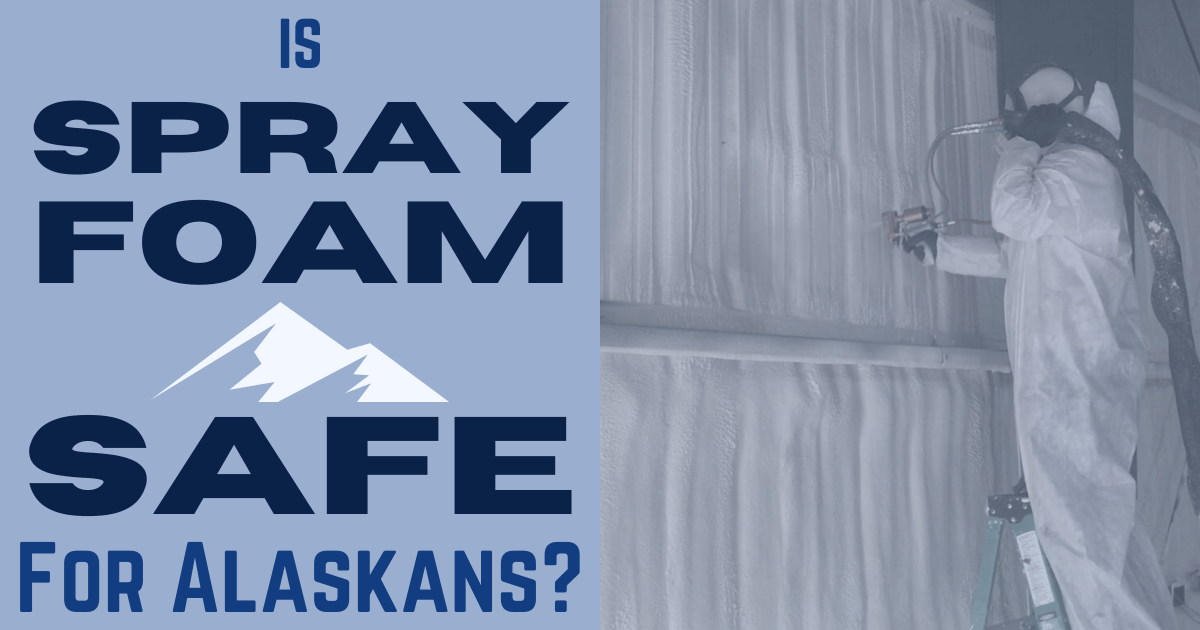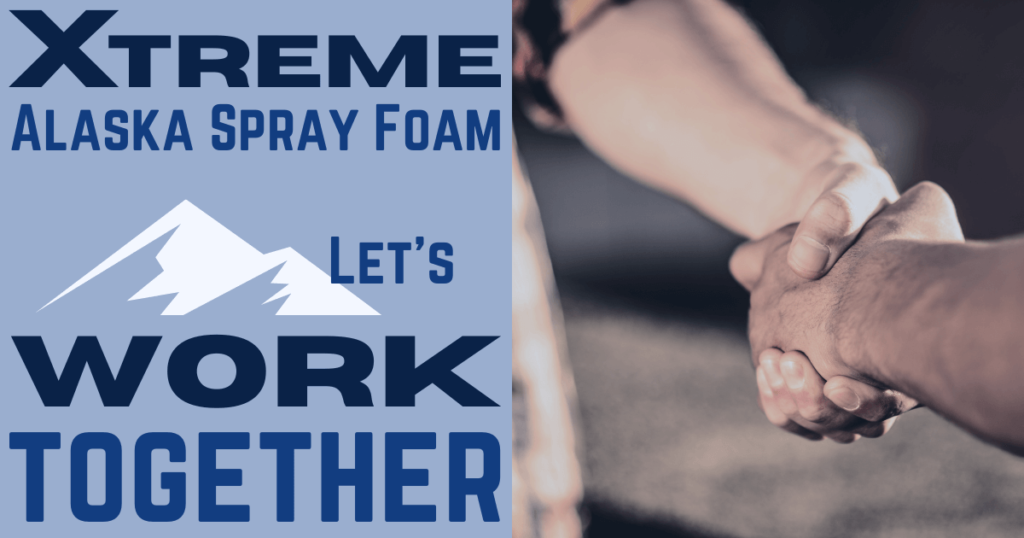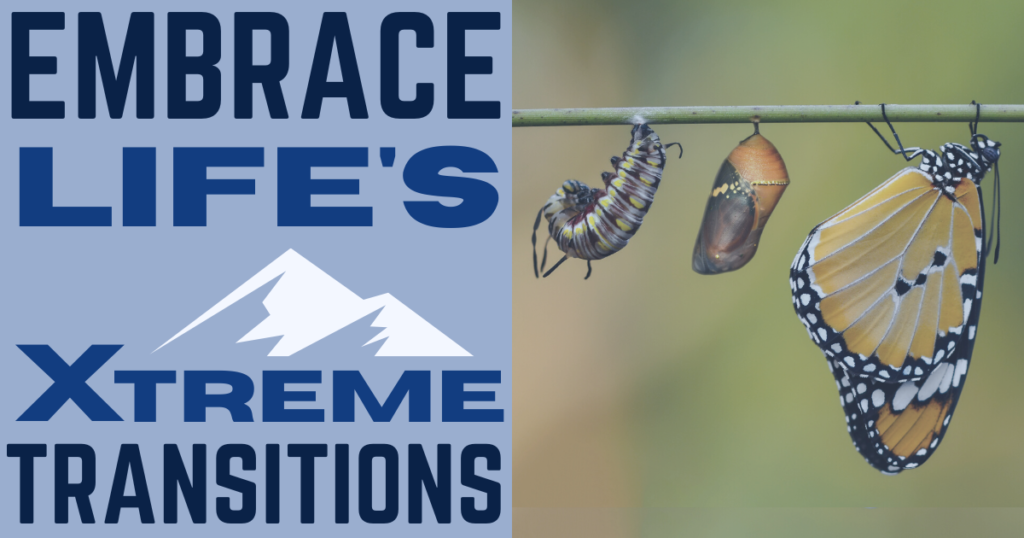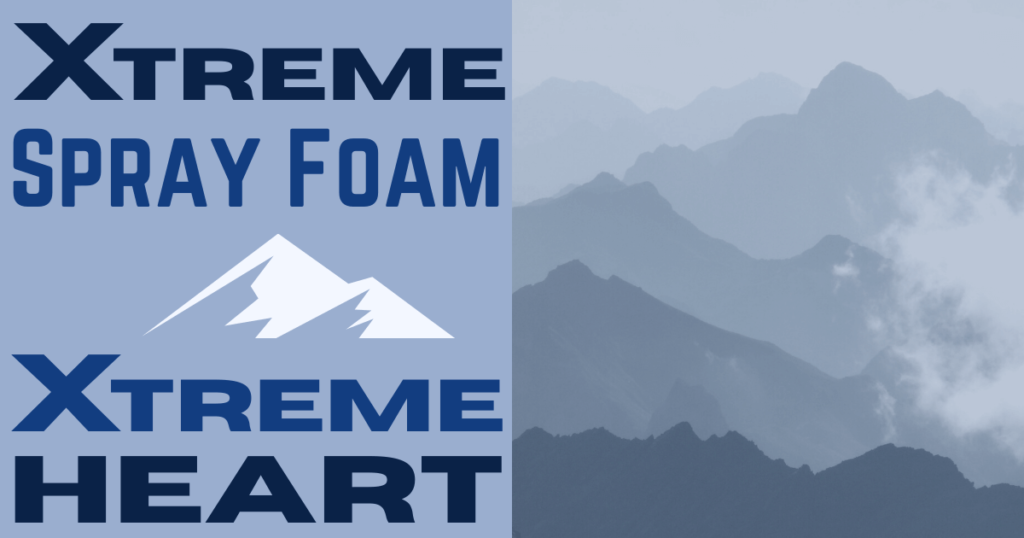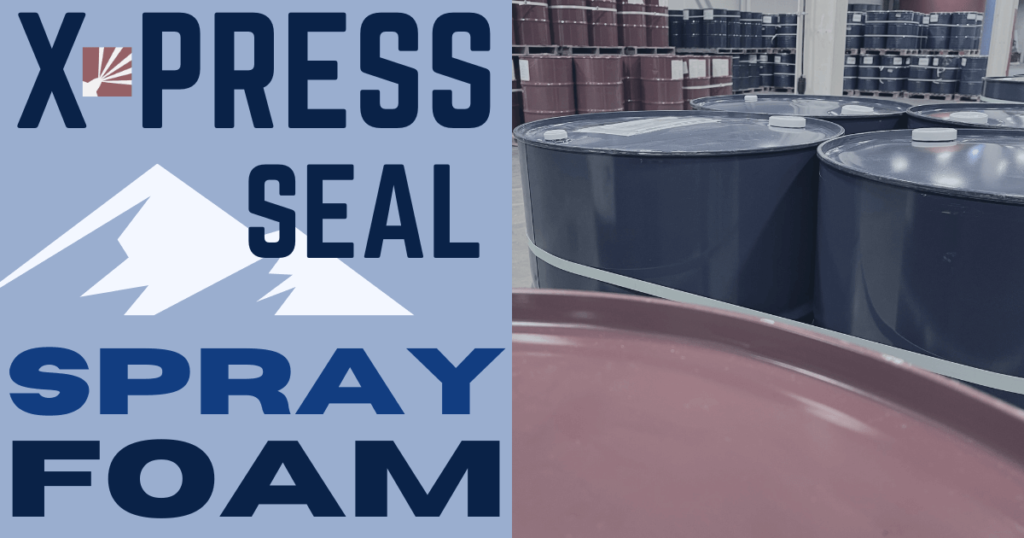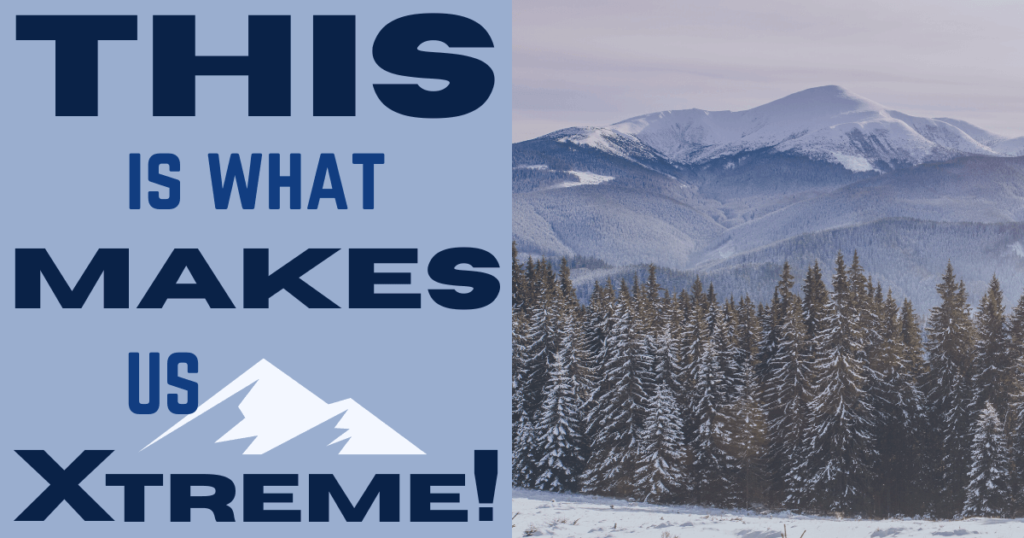Is Spray Foam Insulation Safe? An Alaskan Perspective
Spray foam is a revolutionary insulating medium made of polyurethane.
Polyurethane foam is used in endless applications in modern society, from the chair cushions in our offices, living rooms, and cars to clothing, boat hulls, flotation devices, and foundation repair material.
Other polyurethane foam products are mixed and cured before entering a consumer’s home – but that’s not the case with spray foam insulation.
In order to fill cracks and create air-tight or moisture-tight seals, spray foam is mixed as it is sprayed onto a consumer’s wall.
The mixing and curing must occur on site, in other words.
Since foam is created through a chemical reaction, the liquid components of spray foam insulation must be kept separate until the application of the product – and improper handling of those chemicals can be hazardous.
That’s why we use Personal Protective Equipment (PPE) while spraying or coming into contact with still-curing foam. That’s also why we insist that you take a mini vacation (or at least stay out of the house) while your new insulation is curing!
Curing takes ~24 hours, depending on the type spray foam installed, after which time your foamed home is, once again, safe to inhabit without PPE.
But, back up!
Let’s discuss the components of spray foam insulation in more depth before diving into safety.
The Ingredients & Chemistry of Polyurethane Foam
When spray foam arrives at your home, it is not yet foam…instead, it is two barrels of foam-making materials.
Those materials, when mixed, create a chemical reaction that produces spray foam insulation.
There are two “sides” of spray foam, just like there are two components of JB Weld (or other epoxies)…or a PB& J: A-side and B-side. (Note! Don’t eat spray foam insulation. It won’t taste good!)
A-side is also called “Iso” because it is almost entirely comprised of one of several types of isocyanate (e.g., methylene diphenyl diisocyanate (MDI)).
B-side is a resinous mixture of several other chemicals, including polyols, blowing agents, catalysts, and fire retardants.
When the A and B sides of spray foam material are mixed, a chemical reaction occurs.
Each component contained in spray foam’s liquid material serves a purpose in the chemical reaction or the reaction’s product – but the main building blocks of foam are the isocyanate in the A-side and the polyol in the B-side.
What are isocyanate and polyol? Okay – here’s a very brief chemistry lesson. (Don’t worry – we mean VERY brief!)
Chemicals have names that can appear large and scary, but names like “methylene diphenyl diisocyanate” simply describe the atomic structure of that chemical and its components.
For instance, “isocyanate” describes a group of elements – made of Nitrogen, Carbon, and Oxygen, in this case – that take on a specific shape and bonding pattern, and then connect – as a group – to something else…Like this:
(Something Else)—N=C=O
So, (very) basically, isocyanate and polyol (described here) are chemical compounds containing specific elements arranged in specific structures…and they are the basic building blocks of spray foam insulation!
Stick with us! We promised brief, and we intend to keep that promise.
If you’re interested in learning more about the chemistry of spray foam, we have included resource links throughout this post that can help you in your research.
If what we have discussed above is already too much, and you want a more a basic overview of spray foam, check out our introductory post on the topic!
Okay. Back to it.
When the isocyanate in A-side meets the polyol (either polyester or polyether polyols) in B-side, a reaction occurs, producing long chains of urethane groups called “polyurethane.”
Polyurethane is a polymer. The word “polymer,” like a chemical name, describes a chemical structure. In the case of spray foam, “polymer” refers to the many urethane groups contained within foam, which are bonded together in a repeating pattern.
All right.
We’ve touched on isocyanate and polyol, but what purposes do catalysts, blowing agents, and fire retardants serve in spray foam insulation?
Well, catalysts help get chemical reactions going or enable them to proceed faster than they would without the catalyst.
Blowing agents they are included to help propel the spray foam material onto the receiving surface and assist with foam expansion. Some blowing agents also contribute to the insulating properties of spray foam.
Fire retardants do precisely what they sound like – they prevent spray foam insulation from catching fire for as long as possible, with as little spreading and smoke production as possible.
The specific chemicals used to serve as catalysts, blowing agents, and fire retardants differ, based on the type and brand of spray foam used for your project. However, each component contained in any given spray foam insulation formulation is necessary for the end product to behave properly!
For more information about spray foam chemistry, check out Aastha Dutta’s chapter on polyurethane foam chemistry in this publication.
Benefits of Using Spray Foam in Your Home
Our homes protect us from the weather and wildlife that make Alaska’s wilderness incredible!
What’s best way to keep your house warm through our epic winters? Installing spray foam insulation!
What does spray foam do for you? We’re so glad you asked!
Spray foam creates an air-tight and – in the case of closed-cell foam – a water-tight seal between the inside and outside of a structure…
It actually displays the R-Values it is lab-tested to produce for the life of the product, (unlike other types of insulation)…
And it even helps dampen sounds in your home!
Oh – and all those air-tight, water-tight, sound-resistant seals? They save you money.
With Alaskan winters, that money saved on your energy bill after you install spray foam insulation can add up to a LOT.
But back to the main question this blog post is written to address: is spray foam a safe product to use in your home?
Let’s dig into that now!
Is Spray Foam Insulation Safe?
The short answer? Yes! Once spray foam insulation is cured, it is safe.
That being said, some health hazards come with applying spray foam.
Isocyanate – the main component in spray foam’s A-side – is classified as an eye and lung irritant and needs to be handled with care.
Spray foam is mixed as we spray it onto your walls. This procedure leads to the air-tight and moisture-tight seals that save you money – but also means that we – as the spray foam contractors – need to wear Personal Protective Equipment to install and handle the uncured the insulation.
The fact that spray foam doesn’t arrive at your home “pre-cured” is also why we insist that you and your family take a nice day out of the house while we spray.
After ~24 hours, the spray foam has cured, and the chemicals making up the new polymer on your walls are considered inert. You’re good to go, and it is safe to return home.
Any construction-y work done on or around cured spray foam should be conducted while wearing PPE – especially if cutting the foam in a way that releases foam dust. You don’t want to inhale spray foam dust, just like you wouldn’t want to inhale wood or drywall dust.
Don’t get too worried! Sometimes work needs to be done, and wearing a mask during the process is recommended – that’s all.
If you think you might be around spray foam dust, just be sure to wear personal protective equipment to avoid inhaling it.
In addition to not breathing spray foam, you should probably try to avoid approaching your foam-filled walls with an open flame…as we hope you do already.
It comes down to this: we wouldn’t spray anything in your home that we wouldn’t also spray in our homes, our kids’ homes, or our grandmother’s home.
It’s true that you don’t want to drink isocyanate, or rub it in your eyes, or smell it like you would a beautiful flower – but after curing, spray foam insulation is safe for you and your family to be around.
AND it saves you loads of money on your energy bills.
That’s a win-win, in our book!
Conclusion
Several years ago, we discovered spray foam insulation – a product that is safe, reliable, and helps you save money on your energy bills – and we are sharing that discovery with you!
At Xtreme Alaska Spray Foam, we install spray foam insulation to help Alaskans live comfortably in this glorious land we call home.
Our spray foam installation methods keep your safety – and that of your family – in mind.
We would never put something in your home that we didn’t whole-heartedly believe is safe!
And we don’t just talk big talk.
We genuinely care about you and your family.
Helping Alaskans – just like you! – is the backbone of our business.
We know how hard Alaskan winters can be because we are Alaskans, too!
We also know that even the most difficult Alaskan winters are spectacular to experience.
What could be more amazing than waking up every day in the Alaskan wilderness?
Nothing, that’s what!
We get it.
And at Xtreme Alaska Spray Foam, we want to help you pass each amazing year more cozily with spray foam insulation.
Because you are important!
If you have any questions about spray foam insulation or our installation methods – or to get a quote for your insulation job – give us a call!
We can’t wait to talk with you.

